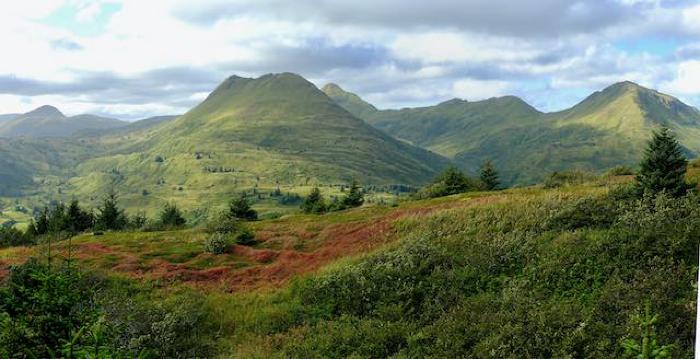Land — Nuna

The Alutiiq homeland stretches from Prince William Sound almost to the southern tip of the Alaska Peninsula, covering a vast section of the Alaska coast. Archaeologists believe that Alutiiq people have always lived here because the distribution of prehistoric artifacts across this landscape closely mirrors the distribution of modern Alutiiq communities. From ancient occupations to the present day, groups of tools occur in the Alutiiq homeland that are different from those found in surrounding areas.
In classical Alutiiq society, people did not own land in the modern sense. Families, perhaps even communities, maintained harvesting rights to the resources in particular locations. Berry patches, salmon streams, bird rookeries, and other fixed harvesting spots were habitually used by the same group, who asserted their hunting and fishing rights in reference to ancestral patterns. A family maintained its right to a salmon stream because previous generations fished in the same spot. Rights to resources were passed through families, not the ownership of land.
Today, land remains an important symbol of Native identity. Passage of the Alaska Native Claims Settlement Act in 1971 returned many thousands of acres to the Alutiiq people. Although the ways that people use these lands have changed, the land and its resources continue to provide for Alutiiq communities.
